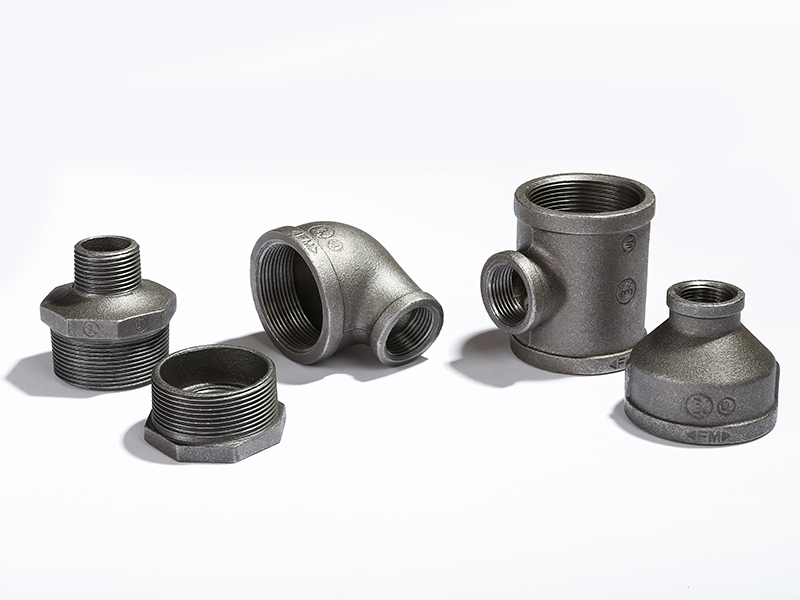Malleable cast iron fittings are a type of fitting used in piping systems that transport gases, liquids and slurries. They are made from malleable iron, a form of cast iron that is more ductile and can withstand repeated stresses and impacts. Their ductility and long service life make them preferred over other types of fittings for heavy-duty applications. Let’s take a deeper look at these industrial fittings.

What Are Malleable Cast Iron Pipe Fittings?
Malleable cast iron pipe fittings are fittings made from malleable iron, a form of cast iron alloyed with copper and other elements. Due to the presence of copper, malleable iron remains ductile even after being repeatedly stressed. This makes it ideally suited for making fittings that can withstand impacts and vibrations.
Some common types of malleable cast iron fittings include:
- Elbows – Used for changing the direction of fluid flow.
- Tees – Used for splitting or combining pipe runs.
- Bushings – Used for connecting pipes of different sizes.
- Couplings – Used for joining two pipes securely.
- Caps – Used to seal the ends of pipe runs.
- Unions – Used for joining two pipes that need to be separated periodically.
These fittings are used in piping systems that transport a variety of fluids like water, steam, gas, chemicals and slurries.
Properties Of Malleable Cast Iron Pipe Fittings
Due to these properties, malleable cast iron pipe fittings are commonly used for applications like steam distribution, compressed air lines, gas lines, drainage systems and more.
Malleable cast iron pipe fittings offer the following properties:
- High strength – Can withstand impacts and vibrations due to ductility.
- Pressure resistance – Can withstand pressures up to 300 psi depending on size.
- Temperature tolerance – Can withstand temperatures between -60 to 600 degree Fahrenheit.
- Corrosion resistance – Coated with enamel or plating to withstand corrosion from liquids.
- Vibration resistance – Malleable iron allows fittings to withstand pipe vibrations.
- Cost effective – Provide a good value for industrial piping applications.
- Easy to install – Can be joined using threaded, welded or flanged connections.
- Long service life – With proper maintenance, can last for decades in service.
Manufacturing Process Of Malleable Cast Iron Fittings
Malleable cast iron fittings are typically manufactured using the following process:
- Melting and Alloying – Cast iron and alloying elements like copper are melted together.
- Pouring – The molten metal is poured into moulds of the required fitting shape.
- Cooling – The moulds are cooled to solidify the metal and form the basic fitting shape.
- Heat Treatment – The fittings are annealed by heating and slow cooling to make the iron malleable.
- Machining – External threads, holes and special shapes are machined on the fittings.
- Coating – The fittings are coated with materials like enamel for protection against corrosion.
- Testing – The fittings undergo pressure testing, dimensional checks and quality tests.
Malleable iron fittings manufacturers in China optimize this process to ensure consistent quality and durability of the final products. Machining and coating processes vary based on the intended application and environment.
